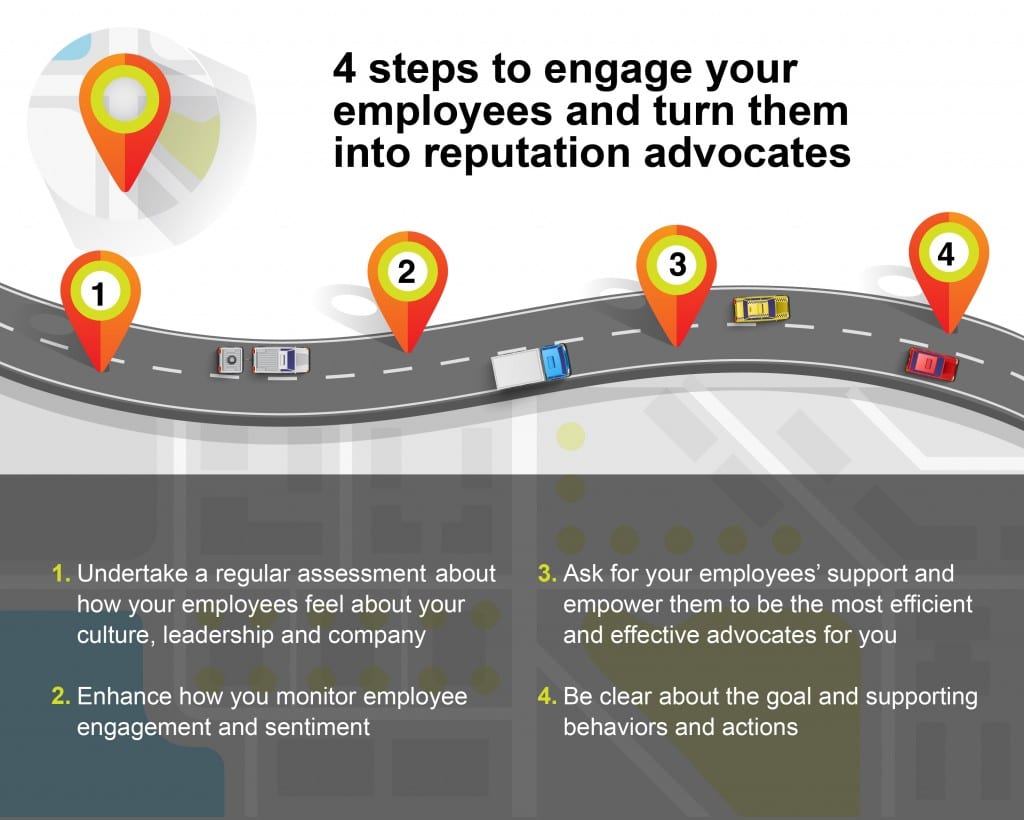 Many refer to today’s corporate landscape as the “reputation economy,” with consumer decisions becoming increasingly dependent on online reviews and opinion leaders. We believe the same is happening within many corporations, where opinions are being formed not only by a combination of influencers, media, pundits and activists, but also through interactions with a brand’s most powerful reputation asset: its employees.
Many refer to today’s corporate landscape as the “reputation economy,” with consumer decisions becoming increasingly dependent on online reviews and opinion leaders. We believe the same is happening within many corporations, where opinions are being formed not only by a combination of influencers, media, pundits and activists, but also through interactions with a brand’s most powerful reputation asset: its employees.
 Our reputation management offering, Reputation by Permission, recognizes that more than ever before, a company’s reputation is being shaped by its stakeholders. And companies that remain ardently committed to terms like control, protect, safeguard, and manage are doomed to fail in today’s world of citizen journalism and instantaneous news.
Our reputation management offering, Reputation by Permission, recognizes that more than ever before, a company’s reputation is being shaped by its stakeholders. And companies that remain ardently committed to terms like control, protect, safeguard, and manage are doomed to fail in today’s world of citizen journalism and instantaneous news.
Looking at reputation through the lens of stakeholders’ perspectives must be the first brick in the foundation of a successful reputation management program. To modernize the approach, companies can no longer judge the status of their reputation solely through the eyes of their corporate leadership. The Reputation by Permission paradigm demands an unbiased (often fearless) look at how a company is perceived by its professionals, and requires a concise strategy to move its reputation forward from where it is now, to where it needs to be.
Perhaps most importantly, companies must look within at the perception, sentiment and discussion among employees and engage in discussions about the company, brand, and products and services.
Here are four steps to better engage employees and harness one of the most critical assets of any company:
1. Undertake a deep, sincere and regular assessment about how employees feel about the culture, leadership and company.
If the people a company pays every day to act and serve on your behalf are not celebrating the culture built, the innovative products and services offered, and the positive impact it has on customers and communities, why would external stakeholders?
2. Enhance how employee engagement and sentiment is being monitored.
If a company is relying solely on annual assessments of employee attitudes, it will have no leverage in winning the hearts and minds of employees where pride, inspiration and loyalty are determined on a day-to-day basis.
3. Ask for employees’ support.
All too often, companies hope that employees will say positive things about their experiences and perceptions about the company. Many employees do so but are not empowered with the permission, tools and direction to be the most effective advocates.
4. Be clear about the goal, supporting behaviors and actions.
Optimize the leadership skills and communication ecosystem in your company to help employees understand a brand’s purpose, aspiration and the role they play in helping to bring these to life each day. If they are not involved in creating that vision, their commitment may never reach the levels needed to build internal permission.
We’d love to hear how you engage your employees and earn the permission you need to succeed in today’s era of transparency. Feel free to leave a thought or question in the comments section below.


